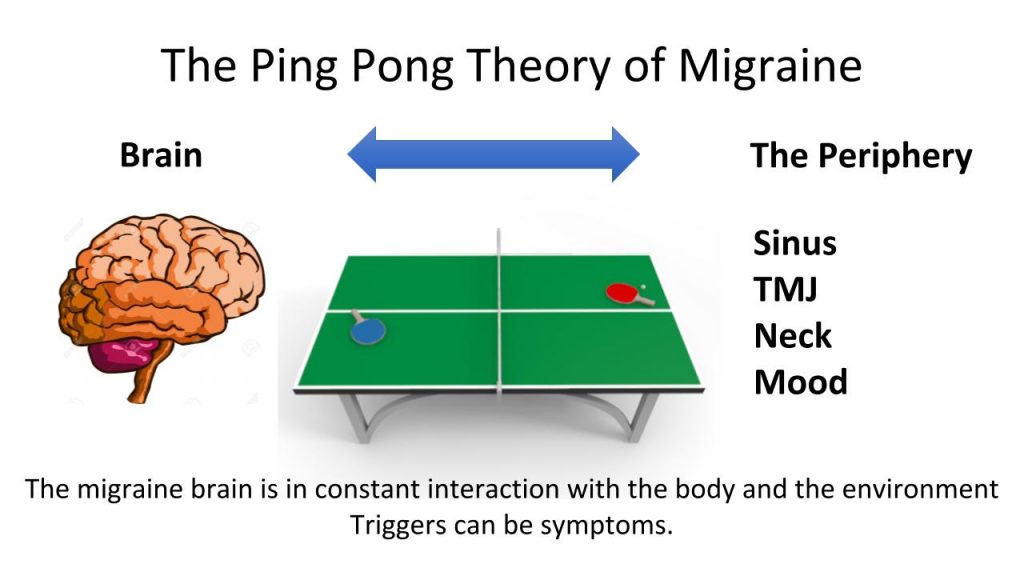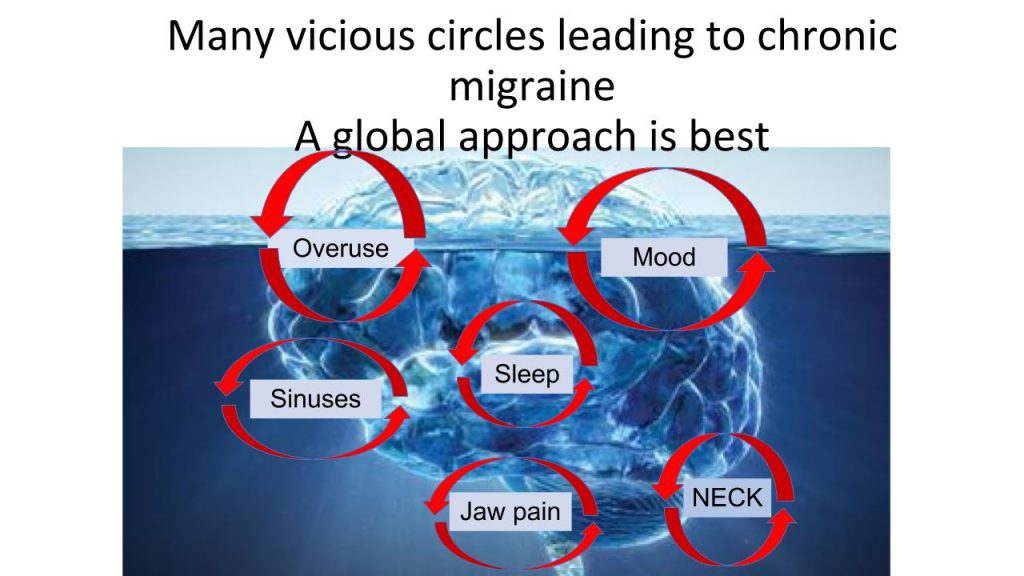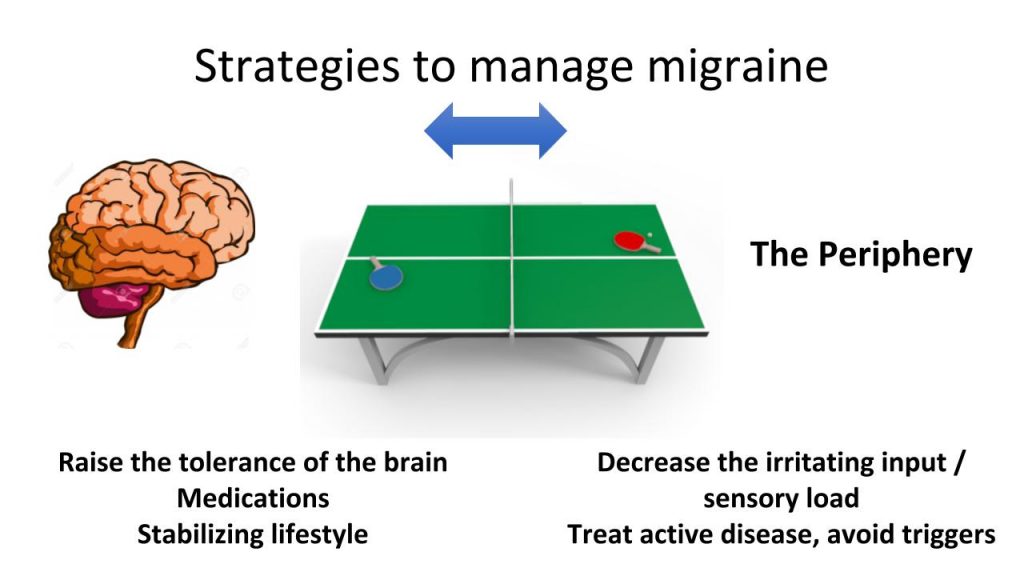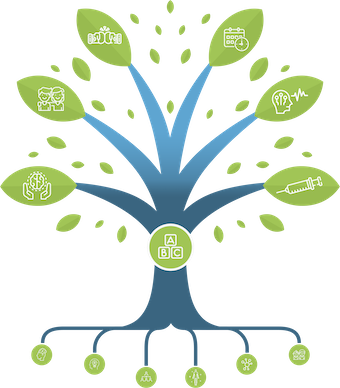The Ping Pong theory : is migraine a cause or a consequence?
Is my stress causing my migraines? I find that having migraines is one major cause of stress for me! And these neck tensions…cause or consequence of migraine?
As you have might have read, the migraine brain is a complex organ with a very particular software. Brains interact with the environment; they sense and make our bodies act one way or the other. Every second, billions of neurons are in action, spend energy, and send electrical signals to other neurons.
We like to think of a disease as “A causes B, and if I get rid of A, then I’ll be fine.”
This way of thinking does not always work in migraine world. Why? Because migraine is a disease of how the brain reacts to things. It is not caused by chocolate, or stress or hormones. Most of us eat chocolate. All of us go through stress. Women of reproductive age have hormonal cycles. Yet, not everyone has migraines.
The Ping Pong theory is a different way of thinking about migraine symptoms and triggers.

In this ping pong table, one player is the brain, and the other is the environment (inside your body and also the outside world). The link between your deep brain centers and the world are your nerves, including the ones for smell, vision, balance etc. The nerve that carries pain from the face is called the trigeminal nerve (because it has three pairs of branches: “tri” for three, and “geminal” for pairs). It interacts closely with the nerves at the back of the neck (See this post).
If the environment starts the game, a powerful trigger will be needed to activate the migraine cascade. When the migraine brain reacts, a cascade occurs, and bang, there’s a pounding headache with nausea. For example, the menstrual drop in estrogen levels, alcohol and strong smells can reliably trigger attacks.
In another scenario, the brain, maybe sensing multiple very small combined triggers, starts the game, initiates the attack, and leads to symptoms that you may interpret as triggers: neck pain, sinus pain, eye pain…and smell hypersensitivity.
Sometimes it is difficult to determine if something is a trigger or an actual sign of the attack (the early stage is called prodrome). Examples include fatigue (is it the attack starting or is it a trigger) and foods (is chocolate the trigger or am I craving chocolate because my attack is starting). Neck pain is another famous example: is my migraine causing my migraine or are these neck tensions triggering the attack? Complex!
Some migraine brains also have a threshold so low that normal living activity triggers attacks. In this situation, which often results in chronic migraine, the brain/environment game turns into long exchanges or vicious circles. In this case it can be hard to tell whether the environment or the migraine is starting the game. If attacks occur almost every day, almost anything could be a trigger. That is very difficult to analyze and may lead to increased anxiety (See this post)

Who started it? How can I stop this nasty game?
The Ping Pong theory helps us understand the diverse treatment options for migraine.
Strategy 1: stabilize the brain and make it more resistant
If we target the brain, we want to improve the software and make it more resistant to attacks. We call that «increasing the threshold» or improving the stability of neuro-networks. At present time, we cannot change our genes, but many approaches can be used to increase the brain’s resistance:
- Medications and supplements are the main options that modify the chemistry of the brain. That’s the chemical approach.
- Neuromodulation is a newer approach to modulate the brain. That’s the electrical approach (LINKIN 1001).
- Getting our brain little by little to tolerate changes is the basis of training. Exercise is a good example. Staying active and avoid deconditioning is important.
- Routine stabilizing activities like meditation are beneficial (See this post).
Strategy 2: decrease the load on the brain
Another way to improve migraine is to target the environment or periphery. We can avoid certain triggers and also quiet down other conditions that may influence or brain. A few examples:
- Treating sleep apnea, depression, or inflammatory disorders
- Avoiding gluten or lactose if one is intolerant to these substances
- Making the hormonal cycle regular with continuous contraceptives to avoid the estrogen drop (See this post)
- Adopting good sinus hygiene to decrease inflammation (See this post)
- Botox injections to quiet down the hypersensitive sensory nerve and muscle tensions (LINKIN 1002)

Lifestyle habits may have a double benefit:
- Regular exercise influences our brain software but also may decrease the muscle triggers by strengthening and stretching the muscles.
- Cognitive behavioural therapy (CBT) and meditation have an influence on the function of the brain, but also help us deal with emotional stressors and avoid energy drains. It makes our minds stronger and flexible.
Of course, you can combine all those approaches for a better control. But not all software is the same. Thresholds and trigger sensitivity are variable.
Now you can understand why the Golden Rule of migraine world is NO one-size-fits all!
Are you inspired? Go back to the Migraine Tree and choose your next step.
LINKIN
1001, 1002,
Post#8
Categories
THE MIGRAINE TREE
- BRANCHES
- ACUTE TREATMENTS
- DEVICES AND NEUROMULATIOIN
- PREVENTIVE TREATMENTS
- PROCEDURES AND INJECTIONS
- SELF-CARE AND LIFESTYLE
- SOCIAL LIFE
- TRUNK
- ROOTS
OTHER CATEGORIES




